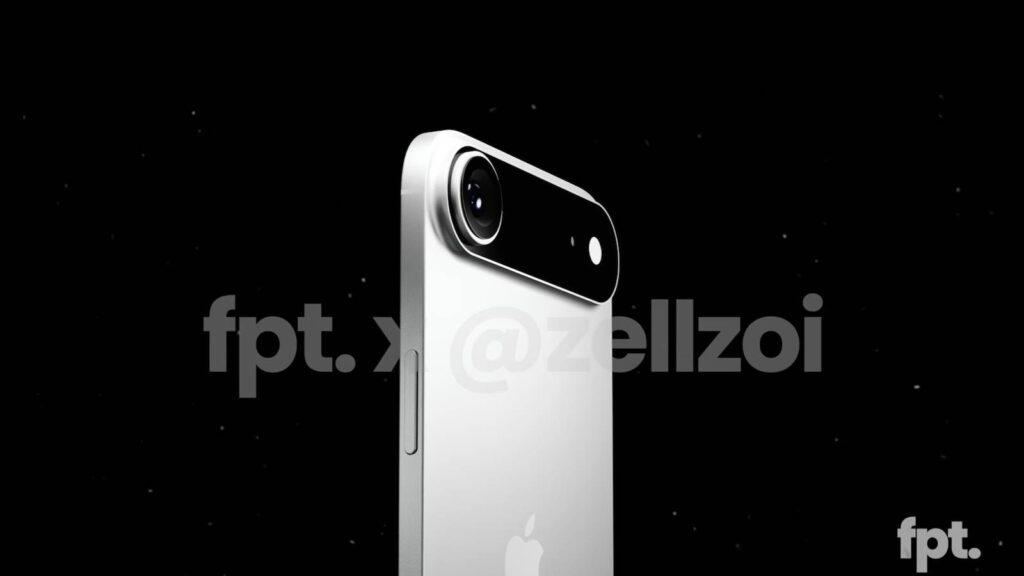The iPhone 17 Air could be the thinnest iPhone yet—and also the first model with a new battery generation. Apple is likely relying on silicon anode cells from Japanese manufacturer TDK. The technology promises greater energy density while requiring less space. The key question is: Is this enough to guarantee good battery life despite the slim design?
The iPhone 17 Air is expected to be unveiled in September 2025 and, at just 5.5 millimeters at its thinnest point, is expected to open a new chapter in Apple's design history. However, this also presents technical challenges – especially with the battery. Conventional lithium-ion batteries reach their limits in such thin devices. This is precisely where TDK's silicon anode technology comes into play. Initial indications suggest that Apple will use this new cell type for the first time in this model.
New battery with silicon anode
Instead of the usual graphite anode, TDK uses silicon in its new batteries. This has a clear advantage: silicon can store around 15 percent more energy in the same space. This is crucial for ultra-thin devices like the iPhone 17 Air. TDK CEO Noboru Saito confirmed in an interview that series production of the new battery will start earlier than planned. Delivery was originally planned for the third quarter, but will now begin at the end of June. This gives smartphone manufacturers – presumably including Apple – enough lead time to install the batteries in their products in time. Saito said that some manufacturers could possibly bring devices with the new battery generation onto the market as early as this year. Apple could therefore become the first major supplier to use silicon anode batteries in series production.
What about the battery life?
Expectations for battery life are mixed. Wayne Ma of The Information predicts that the iPhone 17 Air could have worse battery life than previous models despite the new technology. Mark Gurman of Bloomberg disagrees, believing that Apple can achieve battery life on par with current iPhones through hardware and software optimization. Apple analyst Ming-Chi Kuo also mentioned a "high-density" battery for the iPhone 17 Air in a post. While details are lacking, the term suggests that Apple is not only relying on new materials but also on a compact, high-energy-density design.

Another factor is the potential design itself. According to current rumors, the iPhone 17 Air will forgo an ultra-wide-angle camera—a move that could make room for a larger battery. Additionally, Apple's new C1 modem, which is particularly power-efficient, will be used. Both factors could help keep battery life at an acceptable level despite the thin casing.
What does this mean in the long term?
The integration of silicon is just the first step. According to a report by ETNews, Apple is already planning an even more advanced battery technology for 2027 – to coincide with the 20th anniversary of the first iPhone. This could involve the use of pure silicon anodes, which theoretically store up to ten times more lithium ions per gram than current materials. TDK says it is already working on the fourth generation of this technology. However, the CEO emphasized that mass production is very complex and requires specialized know-how. It's not just about combining materials, but about precise manufacturing at the highest technological level.
Design and market position
The iPhone 17 Air is expected to replace the current Plus model. It will feature a 6.6-inch display and introduce a completely new, ultra-thin design. Apple is sticking to its typical schedule: The announcement is expected in September as usual. With the iPhone 17 Air, Apple is aiming not only to make a visual statement but also to achieve a technological lead in battery technology. If the use of the new silicon batteries is successful, it would send a strong signal to the market – and a step towards energy-efficient, slim next-generation devices.
How Apple is breaking new ground with the iPhone 17 Air
The iPhone 17 Air could mark a turning point for Apple. An extremely thin design combined with modern silicon anode technology represents a true technological leap. Even though battery life is still being debated, many indicators suggest that Apple is taking sufficient measures to deliver a balanced overall package. The new battery technology, the energy-efficient modem, the omission of certain components – all of this could combine to ensure that the iPhone 17 Air impresses in everyday use despite its compact size. For tech fans who value innovation, it's certainly going to be exciting. If you're waiting for a new iPhone that breaks new ground in both design and technology, you should keep a close eye on the iPhone 17 Air. (Image: MajinBuOfficial / X)
- iPhone Fold: External display with hole-punch camera planned
- Report: iPhone 2027 to use AI storage technology
- visionOS 3 brings eye scrolling to the Apple Vision Pro





